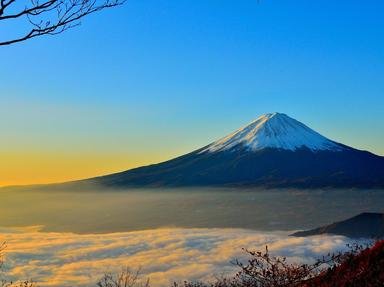Quiz Answer Key and Fun Facts
1. The Japanese saying 'neko ni koban' translates roughly to 'gold coins to a cat.' Which of the these idioms is closest in meaning?
2. In Japanese wedding custom, a wataboshi is equivalent to which of the following in western tradition?
3. 'In The Rural Village of Nagoro' is a video game by which fledgling company?
4. Because of the location of the steep cliffs and hot springs in which the local monkeys bathe, Jigokudani Monkey Park has what nickname?
5. Which of these instruments (sound them out!) is unlikely to be in use when playing traditional Japanese folk music, hogaku?
6. Japan's Narusawa Hyoketsu Ice Cave is on the edge of which famous Japanese mountain?
7. One of Japan's most famous sights, the Kintaikyo Bridge was rebuilt after what event, in 1950?
8. What unusual sight awaits if you decide to visit the Dainichibou Temple in Northern Japan?
9. Known as the Firefly squid, what colour bioluminescence do the Watasenia scintillans of Toyama Bay exhibit?
10. The Momotaro Shrine in Inuyama is a dinky shrine dedicated to an ogre-slaying folktale hero born from what fruit?
Source: Author
VegemiteKid
This quiz was reviewed by FunTrivia editor
agony before going online.
Any errors found in FunTrivia content are routinely corrected through our feedback system.

